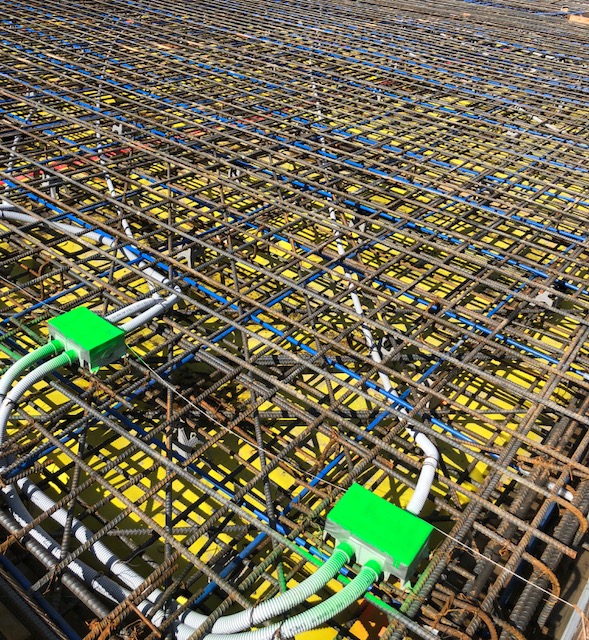Enhance Construction Safety And Security with Professional Concrete Scanning
Enhance Construction Safety And Security with Professional Concrete Scanning
Blog Article
Reveal the Transformative Power of Concrete Scanning in Optimizing Efficiency and Safety And Security
Concrete scanning has become an important device in the building market, providing unequaled benefits in boosting job performance and making certain safety requirements. By using advanced innovation, concrete scanning permits experts to see beyond the surface, uncovering concealed intricacies that might affect the architectural integrity of a structure. The transformative power of concrete scanning hinges on its capacity to give in-depth insights and real-time data, changing exactly how jobs are planned and performed. As we delve right into the complexities of this innovative technique, a globe of possibilities opens up, showcasing a new era of construction practices that focus on accuracy and safety and security.
Value of Concrete Scanning
Making certain the structural integrity and safety and security of building and construction tasks begins with the crucial step of conducting thorough concrete scanning. Concrete scanning is a non-destructive technique utilized to spot and map subsurface elements within concrete structures. This procedure is necessary in identifying potential hazards, such as rebar, post-tension cords, and conduits, that may be concealed within the concrete. By using advanced innovations like ground-penetrating radar (GPR) and electro-magnetic induction, construction groups can precisely situate these elements without causing any type of damages to the framework.
In addition, concrete scanning aids in enhancing project timelines and budget by staying clear of unforeseen costs and hold-ups that may develop due to unpredicted blockages within the concrete. Ultimately, investing in extensive concrete scanning is an aggressive technique that improves both performance and safety and security in building jobs.
How Concrete Scanning Works
Concrete scanning runs as a critical tool in building jobs by using advanced modern technologies to identify and map subsurface elements without creating structural damage. Ground Permeating Radar (GPR) and Electromagnetic Induction (EMI) are 2 main techniques made use of in concrete scanning. GPR works by discharging high-frequency radar pulses into the surface, which get better when they experience subsurface objects or voids. The time taken for the signal to return shows the deepness and place of the items. EMI, on the other hand, uses electromagnetic fields to identify variations in product compositions, such as determining rebar or avenues within concrete frameworks.
Throughout the scanning procedure, the information collected is evaluated in real-time, allowing instant recognition of prospective hazards or barriers under the surface area. By using these advanced innovations, concrete scanning substantially minimizes the risk of pricey damages and injuries on building and construction sites.
Benefits of Concrete Scanning
One of the primary advantages of concrete scanning is the ability to spot and locate ingrained items such as rebar, post-tension cable televisions, and conduits precisely. Concrete scanning helps in preparation and developing extra efficiently, as it provides exact info regarding the place and deepness of architectural elements.

Study: Concrete Scanning Success
In one more situation, a construction firm utilized 3D concrete scanning to analyze the condition of aging concrete structures in a historic building. The comprehensive scans supplied beneficial insights into the extent of degeneration and helped focus on maintenance initiatives efficiently. By proactively dealing with areas of issue identified with scanning, the firm had the ability to prolong the life-span of the framework and make sure passenger safety and security.
These study underscore the transformative power of concrete scanning in improving effectiveness, accuracy, and safety in building and construction jobs.
Implementing Concrete Scanning in Projects
Executing advanced scanning modern technologies during construction jobs has actually become significantly essential for enhancing precision and safety and security. By integrating concrete scanning into project planning and execution, building and construction teams can identify potential risks, such as rebar or post-tension cable televisions, hidden within concrete structures. This proactive method lessens the review threat of crashes, delays, and costly rework, inevitably leading to a lot more effective project timelines and budget plans.
To apply concrete scanning successfully, task supervisors must team up very closely with knowledgeable scanning professionals to establish one of the most appropriate scanning methods for the details job demands. Engaging scanning experts from the onset of a task makes it possible for the team to Find Out More develop detailed scanning strategies that attend to key areas of problem and guarantee complete information collection.
Moreover, including concrete scanning right into normal project operations can streamline decision-making procedures, as real-time check information supplies immediate insights right into the problem of concrete structures - Concrete Scanning. This data-driven method helps with notified analytic and allows groups to make adjustments immediately, promoting a culture of performance and security throughout the job lifecycle

Final Thought
In verdict, concrete scanning plays a vital duty in boosting efficiency and safety in building and construction jobs. By utilizing sophisticated innovation to map and detect out underlying frameworks within concrete, this procedure helps to avoid expensive errors, make sure architectural integrity, and decrease risks on site. With the capability to discover covert aspects and offer exact data, concrete scanning shows to be a beneficial device for enhancing task outcomes and taking full advantage of total success.
Concrete scanning is a non-destructive approach made use of to spot and map subsurface aspects within concrete structures. Additionally, concrete scanning assists in maximizing task timelines and budget plan by preventing unanticipated expenses and delays that might develop due to unforeseen blockages within the concrete. One notable case study entails a large-scale renovation job where concrete scanning played a critical duty in making sure job success.In an additional situation, a construction company made use of 3D concrete scanning to examine the condition of maturing concrete structures in a historical building. By integrating concrete scanning into task preparation and execution, construction groups can determine potential threats, such as rebar or post-tension wires, concealed within concrete frameworks.
Report this page